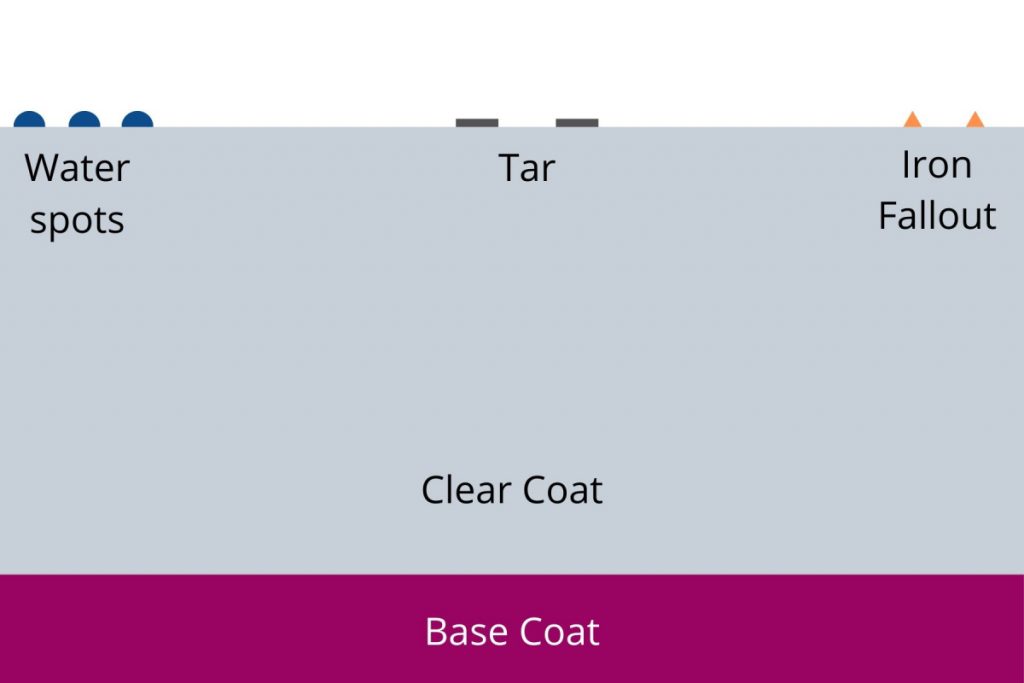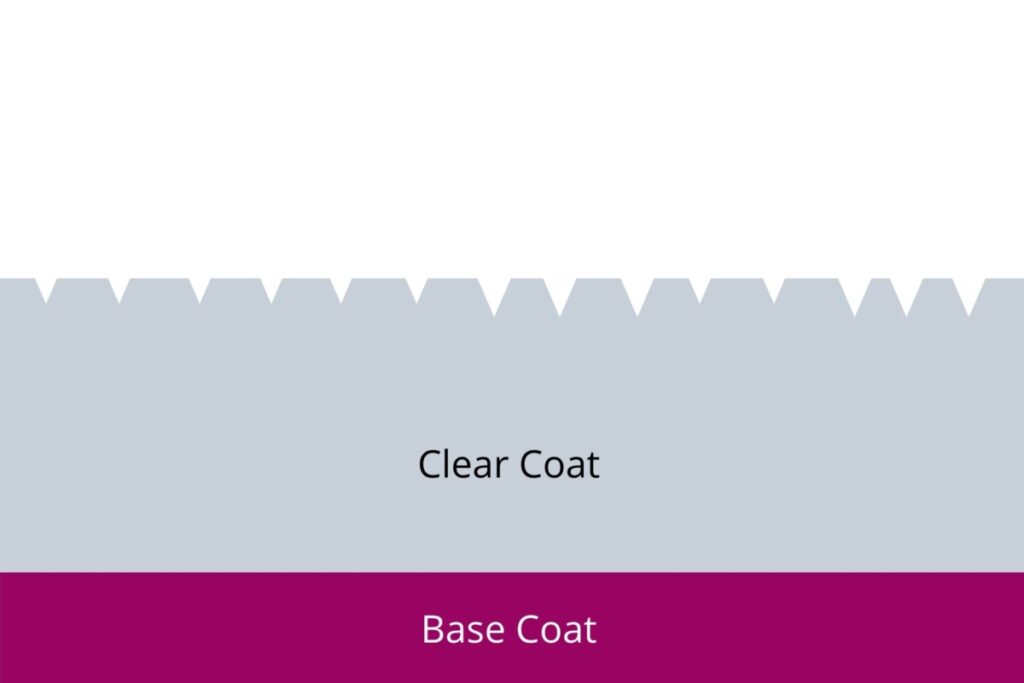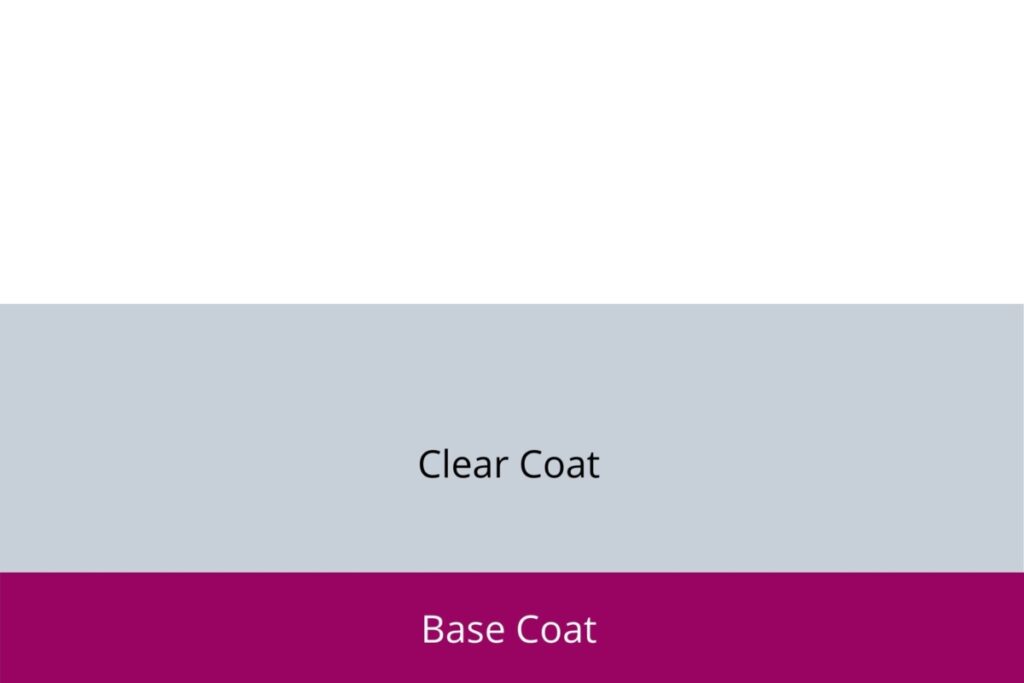Clay and polishes are often used in detailing to improve the condition of a car’s paintwork. But which do you need to do? In this article, I’ll be explaining exactly what claying and polishing is, and how to choose the right option for your car.
The Quick Answer
Clay is a substance used to remove contaminants that have bonded to a car’s paintwork, whilst polish, on the other hand, is used to remove a layer of paint to make the paint glossier. Polishing should be performed after claying to remove any marring inflicted by the clay.

What is Claying?
Automotive clay comes in various forms including: bars, mitts, blocks and cloths. The function is to remove contaminants that have become embedded into the paintwork. This is often done before polishing the paintwork.
When you wash a car, you remove all the loose dirt and debris that is stuck to the paint. However, some substances, called “contaminants” actually bond to the paintwork and become embedded in it causing it to feel rough.
These contaminants cannot be removed by regular washing and include things like tree sap, tar, mineral deposits and iron fallout. Sometimes you will be able to see them, and other times they’ll be too small to see with your eyes.
Clay is designed to remove these contaminants either by abrading them away, or by pulling them out from the paintwork.


If you’re unsure if your car has contaminants and needs claying, then try very lightly running your hands over the paint when it has been freshly washed and dried. If it feels rough, it needs claying.
Process of Claying:
- Wash the car and rinse as normal.
- Warm up the clay by working it in your hands to form a flat, round disk.
- Apply a clay bar lubricant (check out my article on the best clay bar lubricants to learn more)
- Very lightly run the clay over the panel in straight line motions. You will notice the surface feel smoother.
- Wash the panel again, rinse and dry.
The Issue With Claying
Unfortunately, claying a car will cause “marring” in the paint. This means you may notice very light swirl marks after using a clay bar. This is because clay is an abrasive substance. Hence, claying should only be done when necessary, and not as part of a routine.
Make sure you check out my complete guide to claying to learn some essential tips to make the process safer and more effective.
What is Polishing?
Polishing is the process of abrading away a layer of paint to remove light clear coat scratches and swirl marks. Polishing can either be done by hand, with a foam pad, or with a machine polisher. This process of flattening the clear coat, helps light to reflect more evenly off the surface, giving the car a glossier finish.
Here’s a diagram to show the effect of polishing the paint.


Polishing is a permanent technique, and should only be done when necessary, and a limited amount of times, otherwise, you run the risk of running out of paint to polish!
Polishing and Waxing Are Not the Same
Polishing and waxing are two very different processes. Polishes remove a layer of clear coat to help flatten it and make it glossier by removing light scratches and swirls. Waxes do not remove a layer of clear coat, and do not contain any abrasives. Instead, waxes add a layer of protection to help the paint repel water and shield it from more contaminants.
Check out my comparison of waxes and polishes to learn more about the differences.
Polishing vs Compounding
Polishing is a paint correction technique, because it removes light defects. Compounding also correct the paint, but is more aggressive so it is used for deeper scratches.
Neither technique will remove scratches that have gone through to the colour coat though, only ones in the clear coat. Since compounding is a more aggressive abrasion technique, it can leave some hazing behind. Polishes are used to remove this hazing to leave a mirror-like finish.
Check out my article comparing polishing and compounding to learn about the differences between these two processes and help decide which is the best approach.
Clay Before or After Polish?
So now we know that claying and polishing are very different processes, which should you be doing?
Claying should be done before polishing, and never after it.
Claying removes contaminants which allows the polish to work properly. If these contaminants are not removed by clay before polishing, then the polishing process can introduce more scratches. Claying also causes light swirls, since it is abrasive, which can be removed by polishing during the next step of the detailing process.

Looking for some more great detailing products? Make sure you check out my recommended products page for all my current top picks.
Do You Always Need to Polish After Claying?
It is usually necessary to polish a car after claying it, to remove any marring or light swirl marks inflicted by the clay bar. This is important if you plan on applying a ceramic coating which needs to bond to a flat surface. However, if the scratches and swirl marks inflicted by the clay bar don’t bother you, then there is no need to polish.
It is not always safe to polish, as you may be dealing with a car with a thin layer of paint remaining. There are some things you can do though to help in this situation. Check out my article on the risks involved with polishing to learn more.
One other thing you can try, is using a glaze. These temporarily fill in the minor imperfections caused by claying the car. They are not a permanent fix, but can be applied an infinite amount of times without ever damaging the paint.
Take a look at my article on glazes vs polishes to find out which is the best option for you.
Can You Polish Without Claying?
It is not recommended to polish a car without claying it first because it can cause scratches and swirl marks. The polishing pad will pick up any contaminants that would have been removed by claying, and rub them into the paintwork leading to clear coat damage.
If you don’t have time to clay your car, don’t polish it. You must make sure you properly prepare the paint before polishing in order to make it safe and effective. Check out my guide to preparing a car for polishing to learn more about the steps involved.
How Often Should You Polish and Clay?
A car should not be clayed and polished as part of a routine, and only when the paint requires it. However, most cars will need to be clayed and polished at least every couple of years to make sure the paint is in the best condition. Avoid over polishing and claying though as this process will wear away the paint.
So what if your car has a built up of contaminants but you’re worried about removing more clear coat? You have two main options here:
- Clay the car and then apply a glaze to cover the marring, instead of polishing the paint.
- Use a decontamination shampoo to cleanse the paintwork.
Personally, I use Garage Therapy /ZERO: Decontamination Shampoo every 3-4 months to help deep clean the paint.
This helps to remove any loosely bound contaminants and old waxes/ sealants so I am able to apply a fresh layer. It will not entirely remove the need for claying eventually, but it can help to reduce the frequency that you need to do it.
Unsure when your car needs claying? Check out my guide explaining how often you should clay a car to learn more.
Do you Need to Wax After Claying and Polishing?
It is important to apply a wax, sealant or ceramic coating after claying ad polishing the paint, as these processes will remove any existing waxes or sealants that may be on the paint. Applying some more paint protection will prevent contaminants bonding to the paint, and keep it cleaner for longer.
Looking for some paint protection recommendations. Check out this list of my favourite waxes and sealants for some ideas!
Here are some more articles you might find helpful:

